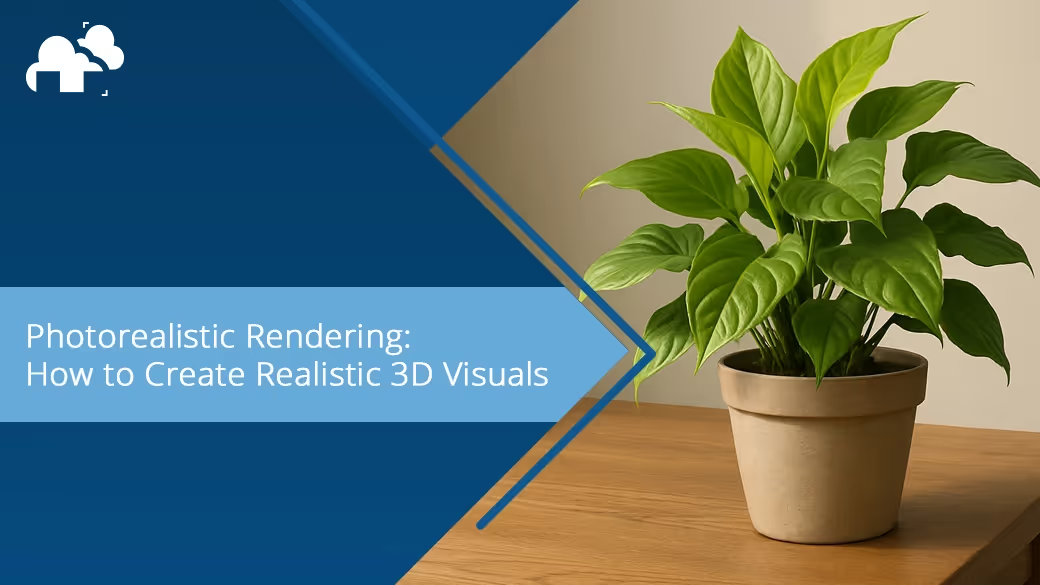
Creating 3D images that are indistinguishable from real-life photography is the holy grail for many 3D artists, designers, and architects. Known as photorealistic rendering, this approach combines technical precision and artistic sensibility to simulate the visual world in a lifelike and convincing manner. Whether you're crafting architectural visualizations, product designs, or immersive environments for games and films, mastering photorealism means mastering light, materials, and the small imperfections that make images feel real.
Photorealistic rendering is the process of using 3D computer graphics to create digital images that are virtually indistinguishable from photographs of real-life objects. This involves simulating how light, materials, and camera angles interact in the physical world to produce a final image that is visually accurate.
Lighting in 3D isn't just about visibility, it’s about storytelling and perception. As shown in film and traditional art, the way you illuminate a scene can dramatically change how it's read. Some key concept include:
Using soft and hard lights strategically, by tweaking parameters like light radius, lets you define volume, set mood, and achieve realism.
No matter how accurate your lighting, your 3D model won’t look photorealistic without believable surface properties.
Study photographs, lighting in your environment, and physical objects to understand how materials and light interact. Collecting real-world references gives you a benchmark for accuracy. Whether it’s how sunlight hits a wooden floor or how a glass mug reflects its surroundings, these subtle cues help guide your material choices and lighting setups. Over time, training your observational skills will drastically improve your ability to recreate believable visuals.
Before you model every detail, establish the lighting conditions for your scene. Use a basic light rig to simulate the sun, fill lights, and background ambiance. This step helps set the tone and mood early on, saving you from major reworks later. Blocking lighting also gives you a chance to test how light interacts with your forms, identifying hot spots, shadows, and reflections that need to be addressed as you refine the scene.
Use checker maps to unify texel density, avoiding blurry or overly sharp textures. Share UV spaces among models for faster rendering times and improved memory usage. Maintaining consistent texel density ensures visual uniformity across different objects in your scene. It also plays a major role in optimizing performance, especially in complex scenes or animations. Tools like Texel Density Checkers in Blender can streamline this process and help you pack UVs efficiently.
You can simulate Gobo lights by projecting texture maps through a spotlight. This adds layered realism without modeling every detail. Gobos are a cost-effective trick to suggest environmental context (like tree shadows or window blinds) without overloading your scene geometry. Their subtle visual cues can break up flat lighting and introduce storytelling elements with minimal render cost.
Add small flaws to surfaces like finger smudges on metal, dust on glass, or slight dents. These imperfections cue the viewer’s brain that the object exists in a real world as perfect surfaces look synthetic and break immersion. Imperfections introduce variability, which the human eye subconsciously expects. You can create these details using roughness maps, bump textures, or decals, adding personality and believability to your models.
Use depth of field and strategic camera angles to mimic photographic lenses. A well-chosen lens angle can reinforce scale, mood, and focus. Shallow depth of field can isolate your subject and add cinematic flair, while wide-angle lenses can exaggerate space or perspective. Experiment with focal lengths, tilt, and framing as if you were composing a photo because in photorealistic rendering, your camera is just as critical as your models.
In tools like Blender, 3ds Max, or Adobe Photoshop, adjust contrast, color grading, and add effects like bloom or chromatic aberration for final polish.
There are even more techniques to achieve photorealism as well, as this is something that can take some time to learn. You can also consider looking up additional resources for more advanced or special techniques.
While both rendering styles serve unique creative goals, understanding their distinctions is crucial when deciding how best to visualize and communicate your design concepts.
Photorealistic Rendering aims to replicate real-world photography with high fidelity. Non-Photorealistic Rendering (NPR) is more about artistic expression, abstraction, and stylization.
Photorealistic Rendering uses physically-based lighting with accurate shadows, reflections, and global illumination. NPR often simplifies lighting to serve graphic readability or stylistic tone, such as in toon shading or illustrative workflows.
Photorealistic Rendering relies heavily on high-resolution, detailed textures that match real-world materials. NPR can use flat colors, hand-painted textures, or symbolic patterns to convey information or mood.
Photorealistic Rendering uses ray tracing, physically based rendering (PBR), and accurate light and material simulation. NPR employs stylized shaders like outline rendering, cross-hatching, or cel shading.
Photorealistic Rendering is commonly used in architecture, product design, film VFX, and interior visualization. NPR thrives in video games, animated films, concept art, and technical illustrations.
Realistic rendering is resource-intensive. Use render farms like GarageFarm.NET to accelerate the process, especially for animations or large scene renders. Farms also allow you to experiment with advanced rendering techniques without being limited by your local machine.
Photorealistic rendering isn’t just about mimicking reality, it’s about communicating effectively. Sometimes the goal is to sell an idea, evoke a feeling, or simply demonstrate what a finished product will look like. Whether you’re simulating sunlight streaming through curtains in a bedroom render or showcasing a new product prototype, the goal is always the same: to make the viewer believe. By mastering lighting, materiality, and the camera, and applying various techniques, any 3D artist can elevate their craft to photorealistic heights. The tools are there, now it’s a matter of learning how to see like a photographer and create like a digital sculptor.